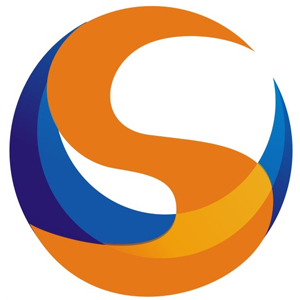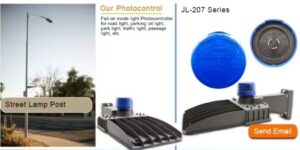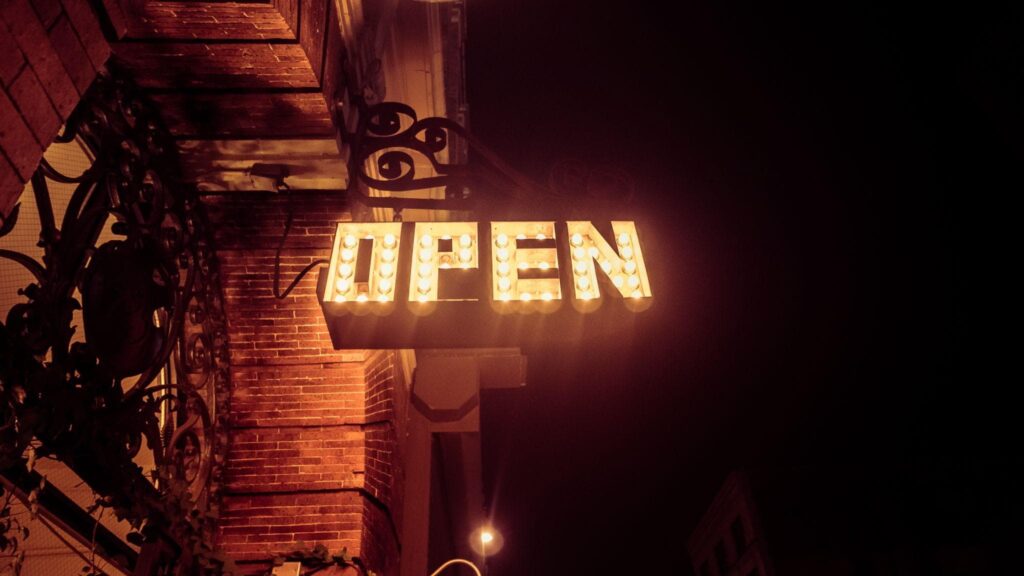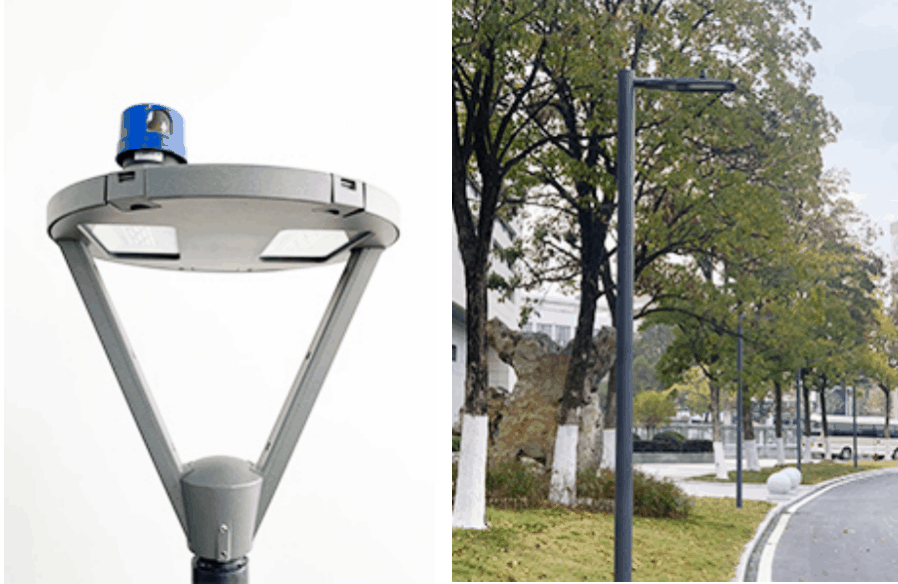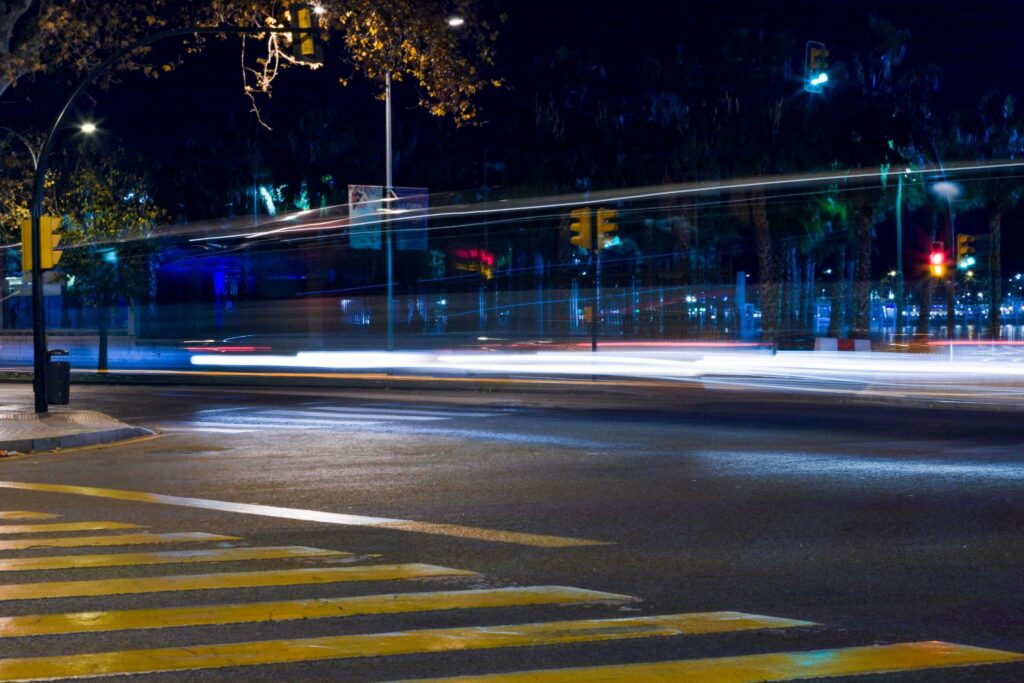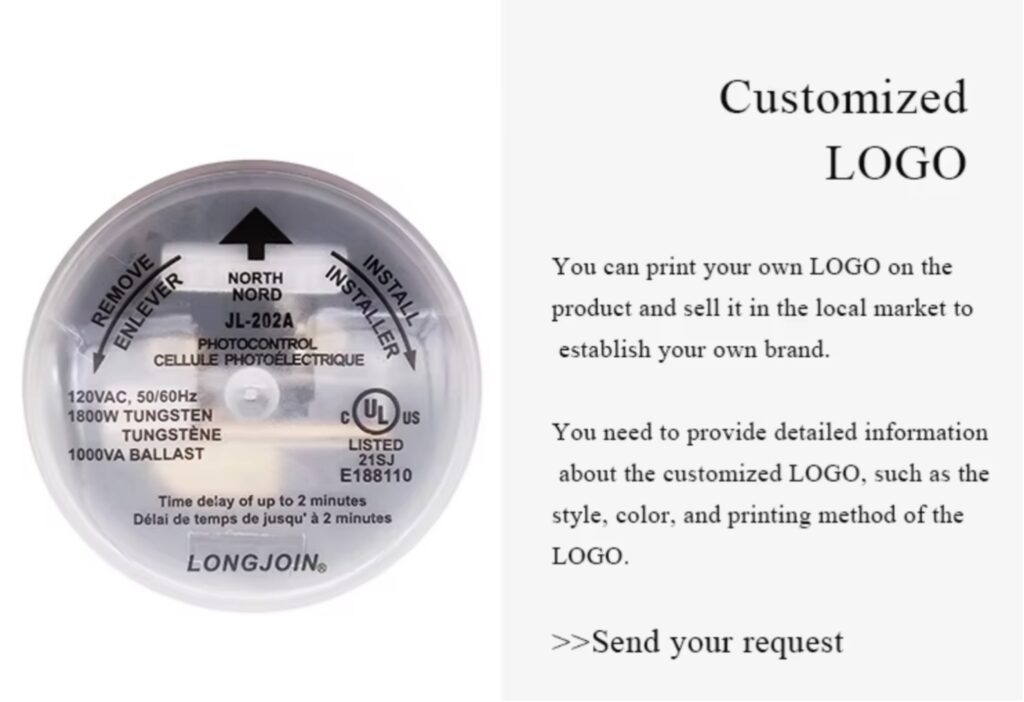Schema
- Introduzione
- Perché sono specifici del clima Fotosensori Necessario nel 2025?
- Cosa fanno le sfide ambientali Controllori fotografici Affrontare le regioni difficili?
- Quale Long-Join Interruttore sensore luce Quali modelli sono più performanti su neve e ghiaccio?
- Qual è il più adatto Fotocellula per gli ambienti costieri?
- Come si esegue il Desert-Grade Prese fotocontrollate Sopravvivere al caldo estremo?
- Può un singolo Fotosensore Lavorare in condizioni difficili e multiple?
- Quali fattori dovrebbero considerare gli acquirenti quando scelgono un immobile specifico per il clima? Fotocellula dal tramonto all'alba?
- Perché Long-Join è il fornitore di riferimento per le fotocellule rinforzate?
- La conclusione
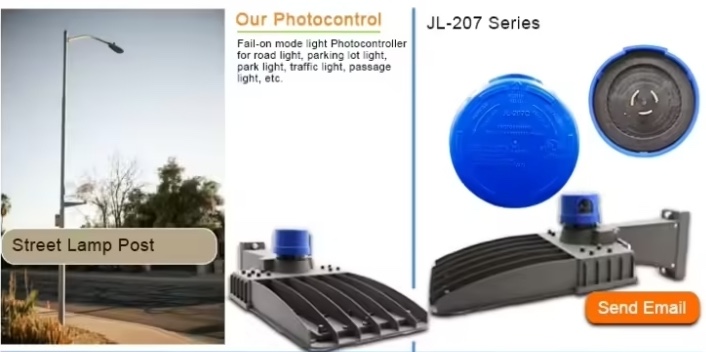
Non tutto all'aperto sensori di luce Sono realizzati per ogni clima. Alcuni addirittura si rompono dopo pochi mesi dall'installazione. La causa potrebbe essere l'aria salmastra, la neve ghiacciata o il caldo del deserto.
Ogni ambiente presenta sfide uniche per l'elettronica da esterno. Ecco perché scegliere la soluzione giusta fotocellula per la tua regione è fondamentale. In questo articolo esploreremo i modelli migliori per zone costiere, innevate e desertiche, così le tue luci resteranno accese, indipendentemente dalle condizioni meteorologiche.
Perché sono specifici del clima Fotosensori Necessario nel 2025?
Generico per esterni controllo dell'illuminazione presuppone condizioni moderate. Spesso si guastano sotto la nebbia salina, il ghiaccio o i raggi UV del deserto. Corrosione, falsi allarmi, scolorimento degli alloggiamenti o surriscaldamento diventano comuni.
I costi di sostituzione aumentano, l'affidabilità diminuisce e i sistemi di illuminazione si guastano. Molti fallimenti dei progetti sono dovuti a incompatibilità dei sensori con il clima locale.
Le città intelligenti e i parchi industriali richiedono ora dispositivi certificati per il clima. Installatori e progettisti si aspettano che i sensori resistano a sale, neve o sole. Sono richieste fotocellule con grado di protezione IP67, alloggiamento anticorrosione e PCB termoresistenti.
Cosa fanno le sfide ambientali Controllori fotografici Affrontare le regioni difficili?
L'illuminazione esterna si guasta quando si utilizza una fotocellula generica in climi estremi. I produttori ora progettano sensori su misura per ambienti specifici. Ecco perché... regolatori di illuminazione stradale questione nel 2025:
Ambienti costieri
- L'aria carica di sale corrode gli alloggiamenti metallici e danneggia i componenti interni dei circuiti.
- L'ingresso di umidità nella nebbia salina riduce rapidamente la precisione del rilevamento della luce.
- I sensori standard non sono sufficientemente resistenti ai test di nebbia salina come ASTM B117.
Neve e freddo
- Il riflesso della neve può attivare le fotocellule durante le ore diurne.
- L'umidità si condensa e si congela sulle lenti, bloccando la risposta del sensore.
- Gli alloggiamenti comuni non funzionano a temperature inferiori allo zero se non sono dotati di protezione IP.
Condizioni del deserto
- Questi climi caldi intensi accelerano l'invecchiamento dei PCB e il guasto dei componenti.
- L'esposizione ai raggi UV provoca crepe nella lente e nella custodia in plastica, compromettendone la tenuta.
- La polvere e lo stress termico riducono notevolmente la durata operativa.
Quale Long-Join Interruttore sensore luce Quali modelli sono più performanti su neve e ghiaccio?
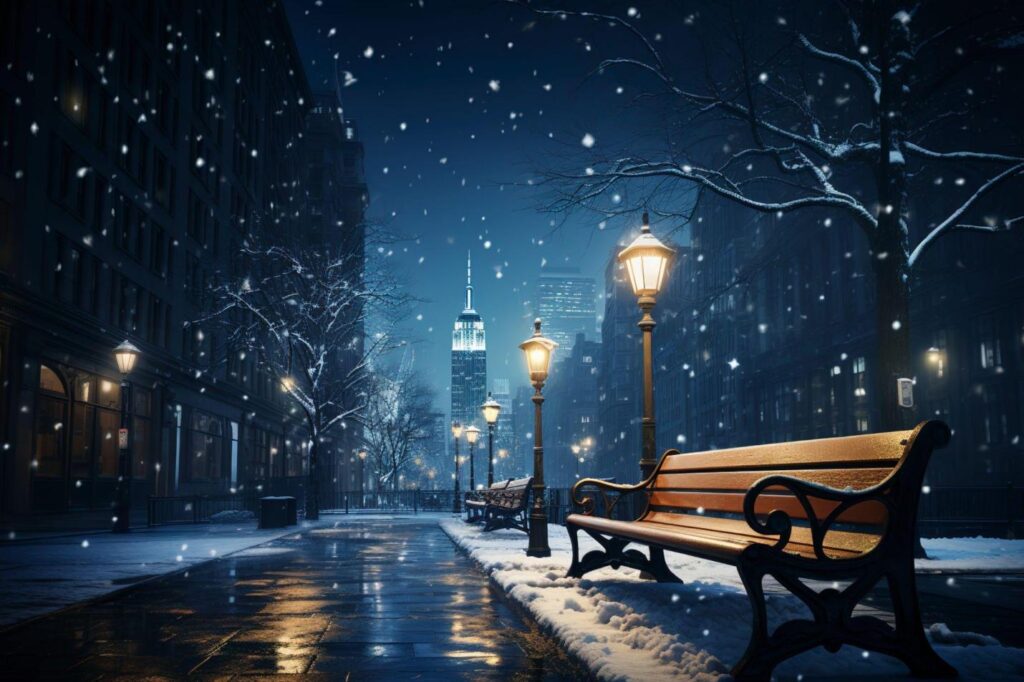
IL JL‑205/207 La serie è ottimizzata per ambienti nevosi e ghiacciati. Questi modelli sono progettati con IP67 Sigillatura per bloccare umidità e condensa. L'elettronica funziona in modo affidabile fino a -40 °C, garantendo l'illuminazione anche in condizioni di freddo estremo.
- I tempi di ritardo di accensione e spegnimento impediscono la falsa attivazione dovuta ai riflessi della neve.
- Una modalità fail-safe (fail-on) integrata mantiene le luci accese in caso di guasto del sensore.
- Le guarnizioni in silicone resistenti mantengono l'integrità durante i cicli di gelo e disgelo.
Ampiamente utilizzata in Canada, Nord Europa e nelle regioni alpine, questa serie si è dimostrata stabile anche negli inverni sotto zero e nei paesaggi innevati. Ogni caratteristica affronta una sfida comune nei climi ghiacciati. Ecco una tabella che illustra ulteriormente i dettagli tecnici del JL-205C.
| Caratteristica | Specificazione |
| Gamma di tensione | 110–277 V CA |
| Consumo energetico | Circa 1,5 VA |
| Livello Lux On/Off | ~6 lx ACCESO / ~50 lx SPENTO |
| Carico nominale | Tungsteno da 1000 W / Alimentatore da 1800 VA |
| Tolleranza all'umidità | Umidità relativa fino a 99% |
Qual è il più adatto Fotocellula per gli ambienti costieri?
La serie Long-Join JL-436C è progettata per zone costiere salmastre e umide. È dotata di un alloggiamento in lega di zinco con rivestimento resistente alla nebbia salina, che offre un'elevata resistenza alla corrosione.
- Soddisfa i requisiti del test di nebbia salina ASTM B117 per un'esposizione continua di 1.000 ore.
- Per proteggerlo dall'ingresso di umidità e sale, è dotato di guarnizioni in neoprene.
- Le lenti stabilizzate ai raggi UV resistono al degrado causato dalla luce solare e dal vento costieri.
Installato con successo nelle città costiere della Florida, nei comuni costieri giapponesi e nelle regioni del Mediterraneo, il JL-436C garantisce una lunga durata laddove i sensori standard si corrodono rapidamente. Ogni componente previene i noti guasti tipici dell'aria marina.
Ecco una tabella con altre specifiche tecniche del JL-436C.
| Caratteristica | Specificazione | Caratteristica | Specificazione |
| Tensione nominale | 120–277 V CA (50/60 Hz) | Carico nominale | 1000 W al tungsteno |
| Consumo energetico | ≤ 0,4 W | Gestire i livelli di Lux | ~16 lx ACCESO / ~24 lx SPENTO |
| Temperatura ambiente | da −30 °C a +70 °C | Grado di protezione IP | IP65 |
| Protezione contro le sovratensioni | ~235 Joule | Modalità di errore | Fail-ON (le luci rimangono accese se il sensore si guasta) |
Come si esegue il Desert-Grade Fotocontrollo Sopravvivere al caldo estremo?
La serie JL-243C è progettata per ambienti caldi e soleggiati. Il suo circuito stampato interno è realizzato con un design PCB ad alta temperatura, che consente un funzionamento affidabile anche in condizioni di calore intenso. Un guscio in policarbonato con protezione UV protegge gli elementi sensibili dai danni del sole e mantiene l'integrità dell'alloggiamento nel tempo.
- La compensazione del decadimento dei LED regola i livelli di luce nel tempo per contrastare il graduale oscuramento dei LED causato dalla costante esposizione al sole.
- Le robuste protezioni contro la temperatura e i raggi UV rendono il modello JL‑243C ideale per le zone desertiche.
Un'installazione reale in un parco industriale di Dubai ha visto l'installazione di 12.000 unità, che hanno resistito a temperature elevate giornaliere e alla forte luce solare. Il tasso di guasto osservato è stato inferiore a 0,2%, a dimostrazione della sua resilienza e affidabilità in condizioni desertiche estreme.
Può un singolo Fotosensore Lavorare in condizioni difficili e multiple?

Sì! Ibrido interruttori con sensore di luce esterna Possono essere progettati per prosperare in tutti i climi intensivi. Costruiti per resistere a tutte le condizioni atmosferiche, combinano:
- Sigillatura IP67
- Materiali resistenti ai raggi UV
- Rivestimenti anticorrosione
Questi modelli sono testati per tutti gli ambienti estremi e garantiscono la resilienza in ambienti misti. Ulteriori opzioni di materiali includono:
- Gli alloggiamenti in policarbonato proteggono dalle crepe causate dai raggi UV.
- Le guarnizioni in silicone proteggono dall'umidità e dal sale.
- I corpi in lega di zinco o in metallo rivestito resistono alla corrosione nell'aria marina.
Quando sviluppare progetti personalizzati per progetti multiclimatici
Governi e progettisti di smart city necessitano spesso di specifiche unificate per le fotocellule per infrastrutture che si estendono in zone costiere, alpine e desertiche. I progetti personalizzati eliminano i molteplici SKU e riducono la complessità degli appalti. Le soluzioni su misura garantiscono:
- Prestazioni costanti su più zone
- Manutenzione e stoccaggio semplificati
- Conformità alle varie certificazioni ambientali
Quali fattori dovrebbero considerare gli acquirenti quando scelgono un immobile specifico per il clima? Fotocellula dal tramonto all'alba?
La scelta errata delle fotocellule può causare guasti frequenti e costosi interventi di manutenzione. Gli acquirenti dovrebbero adattare ciascun modello al clima di destinazione in base a fattori specifici e non negoziabili. Ecco una tabella che illustra i principali criteri di selezione in base al clima.
| Criteri | Climi nevosi | Climi costieri | Climi desertici |
| Resistenza alla temperatura | -40°C o inferiore | Da moderato a lieve | Tolleranza PCB +70°C |
| Materiale dell'alloggiamento | Plastica + Silicone | lega di zinco | Policarbonato con protezione UV |
| Protezione dall'umidità | Sigillato IP67 | Rivestimento in nebbia salina | Resistenza alla polvere e ai raggi UV |
| Errori comuni | Accumulo di ghiaccio e nebbia | Corrosione e ruggine | bruciature dei PCB |
Lista di controllo dell'acquirente
Prima di effettuare un ordine o di partecipare a una gara d'appalto per un progetto, accertarsi di quanto segue:
- Le valutazioni della temperatura corrispondono agli estremi climatici locali
- Le certificazioni IP o ASTM sono verificabili
- Materiali come silicone o policarbonato sono elencati nelle schede tecniche
- I rapporti di prova confermano la conformità agli standard internazionali
- La modalità fail-safe è integrata per le installazioni critiche
- È disponibile il supporto tecnico per la risoluzione dei problemi sul campo
La scelta di una fotocellula non è solo una questione di tensione o tipo di presa. È una questione di sopravvivenza nel mondo reale: neve, sale o sole.
Perché Long-Join è il fornitore di riferimento per le fotocellule rinforzate?
Long-Join non si limita a produrre fotocellule: le progetta per resistere ai climi più difficili del mondo. Ecco perché città e aziende di servizi pubblici in Canada, Norvegia, Emirati Arabi Uniti e Cina costiera si affidano a Long-Join per un'illuminazione esterna ininterrotta.
Distribuzioni globali comprovate
Le fotocellule della serie JL di Long-Join sono già installate in:
- Dubai Industrial Park – oltre 12.000 unità, tasso di guasto <0,2%
- Europa settentrionale – Unità adatte al freddo che gestiscono temperature fino a -40°C senza appannamento
- Costa della Cina meridionale – Le fotocellule testate in nebbia salina resistono all’umidità marina
- Alberta, Canada – La logica di ritardo che riflette la neve evita lo sfarfallio
Questi progetti non sono progetti pilota, ma progetti a lungo termine, testati sul campo.
Costruito per affidabilità di livello industriale
Le robuste fotocellule Long-Join sono caratterizzate da:
- Oltre 20 anni di produzione di qualità per l'esportazione in Nord America e UE
- Progettazione di PCB e contenitori specifici per l'esposizione ad alte temperature o basse temperature
- Test interni per soddisfare o superare gli standard UL773 e ANSI C136.41.
I loro controller non sono standard, ma progettati secondo specifiche. Ecco una tabella che illustra gli standard di test interni di LongJoin e i rispettivi dettagli.
| Standard di prova | Scopo | Conformità Long-Join | Dettagli del test |
| UL 773 | Certificazione di sicurezza Photocontrol | SÌ | Valuta la sicurezza elettrica |
| ANSI C136.41 | Interfaccia di controllo e regolazione della luminosità | SÌ | Garantisce la compatibilità con 7 pin |
| IEC60529 (IP67) | Protezione dall'ingresso | SÌ | Impermeabile, antipolvere |
| ASTM B117 | Resistenza alla corrosione da nebbia salina | SÌ | Utilizzato per test di applicazioni costiere |
Personalizzazione per progetti OEM e governativi
Che si tratti di un programma per una città intelligente o di un requisito di marchio privato, Long-Join offre:
- Capacità di progettazione OEM/ODM complete
- Curve di ritardo personalizzate, valori di sovratensione, pinout delle prese
- Supporto per Zhaga Libro 18, D4i, LoRa, NB-IoT integrazioni
Quando i governi indicono gare d'appalto che richiedono prestazioni in condizioni estreme, Long-Join dispone già di modelli collaudati in quelle condizioni.
La conclusione
L'illuminazione intelligente in climi rigidi richiede precisione, durata e conformità. Le fotocellule rinforzate di Long-Join affrontano queste sfide con comprovata affidabilità. Per gli acquirenti che cercano una fornitura affidabile, Chi-Swear offre un accesso affidabile alle fotocellule intelligenti avanzate di Long-Join, adatte a ogni ambiente.
Link esterni
- https://www.astm.org/b0117-19.html
- https://en.wikipedia.org/wiki/IP_code
- http://www.julixing.com.cn/en/new/new-58-907.html
- https://www.nema.org/standards/technical/ansi-c136-series-standards-for-roadway-and-area-lighting-equipment
- https://www.zhagastandard.org/books/overview/smart-interface-between-outdoor-luminaires-and-sensing-communication-modules-18.html
- https://www.dali-alliance.org/d4i/
- https://en.wikipedia.org/wiki/LoRa
- https://en.wikipedia.org/wiki/Narrowband_IoT
